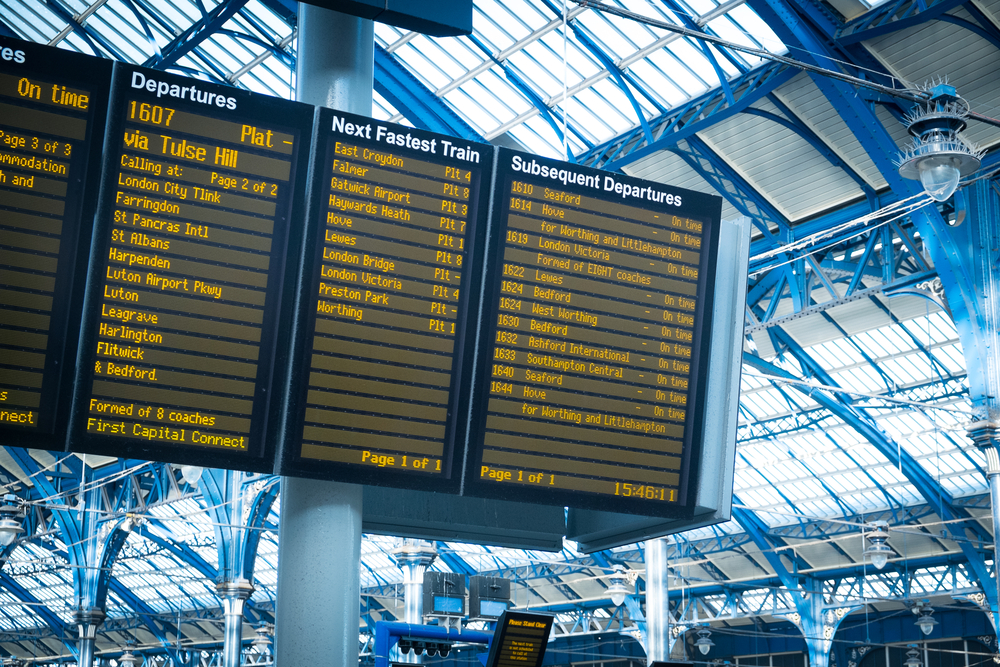With an increasing spotlight on rail delays, disruptions and the rising cost of travel, pressure is understandably mounting on UK rail operators to improve the quality of service for the fare-paying public. And, as the recent bout of bad weather across the UK highlighted, rail travel is still frequently disrupted by signalling problems, broken-down trains and congestion. As a result, the industry, the Government and, of course, customers all recognise that something needs to change.
Big Data is starting to be used to address this challenge through Predictive Maintenance (PM). This solution has come to the forefront thanks to the recent advancements in sensors and communication technologies in trains. These sensors, embedded into the various systems and components on trains, generate huge volumes of data, which can be collected and analysed on a continual basis. Such analysis is helping operators to monitor the health of these systems and subsystems, therefore enabling them to predict conditions that could become a hurdle in the future and tackle them at an early stage.
> See also: The era of big data won't materialise without fast data
Normal mechanical failure modes degrade at a speed directly proportional to their severity. If the problem is detected early, major repairs can usually be prevented. Today’s technology makes it possible to affordably collect terabytes of data from trains, way side equipment, signalling and communication infrastructure, analyse that data in real-time and detect problems before they actually happen.
The key benefits of using data in rail
PM is helping operators to improve the availability of their services and reduce maintenance costs. This is especially important when UK passenger fares have continuously gone up in recent years to pay for improvements made to the rail network. PM enhances the overall effectiveness of transportation systems, ultimately leading to improved safety and higher customer satisfaction, something which is incredibly important when there’s such a spotlight on the network operators.
Affordable solutions can generate ROI quickly while completely transforming the maintenance landscape. Computing systems are evolving rapidly to on-board intelligent systems without taking data to any remote cloud. However, these technologies are new and, as such, immature within this sector. Train operators and manufacturers should therefore be mindful of the following when deploying data analytics in rail:
Look for the right skills when hiring data scientists
As big data analytics is an industry that’s still in its infancy, particularly in the rail sector, it’s incredibly important that individuals with the right skills and experience are brought on board as quickly as possible. When hiring junior level developers, look for those with a general understanding of analytics and basic knowledge of java programming. This makes it easier to train them in Hadoop-based programming. For senior level roles, look for a strong technical background in analytics with matching exposure to the transportation domain.
Choose the right system or subsystem for prediction
Selection of the system is the most critical step in building a PM solution. It is crucial to define a narrow scope and not try to predict everything. Doors would be a typical example of such systems.
It is therefore important to identify what is possible to predict. Inaccurate selection of a system can not only lead to failed outcome, but can also limit confidence in the solution.
Identify the required data sets as early as possible
It is generally assumed that the sheer volume of data generated from systems is sufficient to build PM solutions from it. However, it is important to remember the objectives behind collecting each data set. They may have been deployed by the manufacturer without any PM solution in mind.
As such, preparing the data required for building PM solutions is one of the key activities in the process of solution development. It is not always what operators already have, but it’s about what the solution needs. A fair understanding of the objectives is necessary to come up with the required data sets.
> See also: Inside Network Rail's £1 billion IT budget, and CIO Susan Cooklin stands up for women in tech
Taking a top-down approach often leads to a successful outcome here. This is where the business objectives are clearly defined first, before the required data sets are identified, and then the data is prepared in order to develop an algorithm.
Complement your data science team with rail expertise
Finally, bolster your data scientists’ understanding with knowledge of the rail sector. It is generally assumed that a data scientist is all that is needed to build a cutting-edge algorithm for a PM solution. A data scientist can develop any algorithm, but it takes a lot more to deliver the right algorithm for a specific business need. Experience shows that it is the domain expert, as opposed to the data scientist, that is the real hero in achieving a successful solution, as they can guide the data scientist to build the right algorithm. Interpretation of patterns – vibration and noise for example – is a key area where the rail expert can guide the data analyst as to not over-interpret coincidence findings.
As big data analytics looks to establish its position in the rail industry, operators should consider these points to help them to deploy effective solutions. The success of PM lies in hiring people with the right skills, selecting the right systems to assess, creating and preparing the necessary data sets and getting the right combination of rail experts and data scientists on board. Ultimately, besides increased availability and cost efficiency, passengers will appreciate fewer delays and increased safety, resulting in higher customer satisfaction.
Sourced from Bhoopathi Rapolu, Head of Analytics EMEA, Cyient







